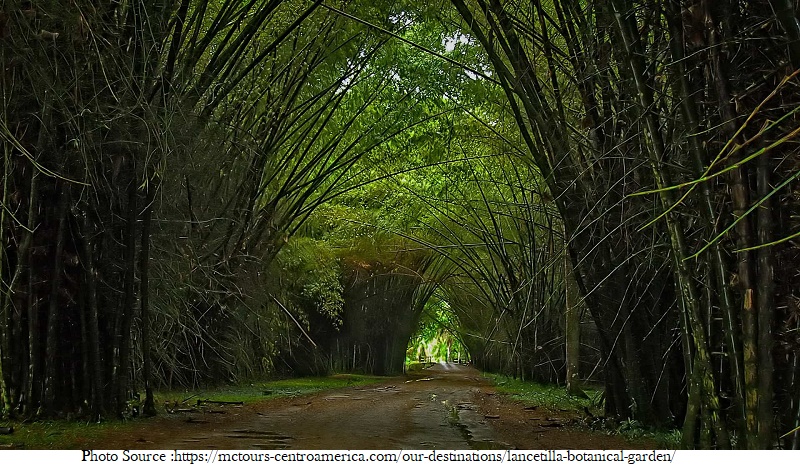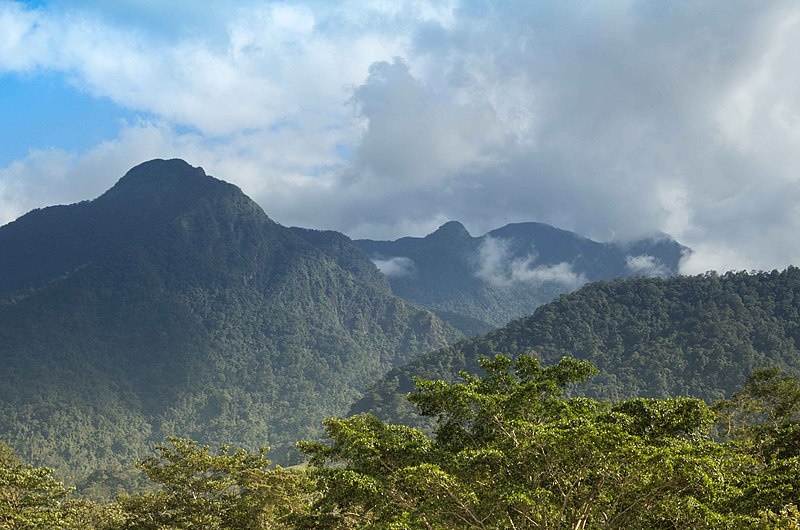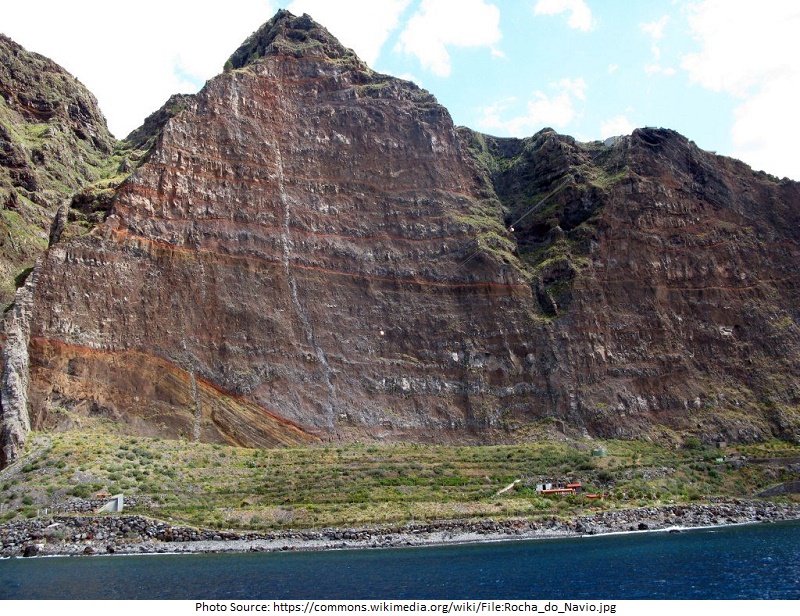20 Best Tourist Attractions to Visit in Honduras
1. Cusuco National Park

This national park is another well-maintained region of Honduras situated backward the city of San Pedro Sula. It’s no simple task entering into the park as many roads can be unreachable. But you can get the utmost out of your visit by hiring a native guide to assist you to explore the jungle and see tropical birds and other wildlife. Over 260 types of bird have been marked in the park. The best time to locate the maximum wildlife is early morning. And from April to June is the finest timeframe to see parrots, toucans, and quetzals.
2. The Mosquitia

The Mosquitia contains the biosphere reserve, and it is one of the country’s last totally backward areas. Tours are limited for the most daring tourists as the living conditions can be pessimistically related as ‘rural.’ This region of swampy mangroves, unharmed rainforests, and desolated shoreline makes up almost a fifth of the whole country but it just has two main roads and a moderate population of tribal people. You’ll see fantastic wildlife, incredible natural sights, and a flourishing native culture. Traveling Mosquitia is the best method to flee away from modern life and live like a real tourist.
3. Rio Platano Biosphere Reserve

This reserve is a UNESCO World Heritage Site and one of the finest spots to see the flora and fauna of Central America’s tropical rainforest. Along with the dense rainforests, wide savannas, and mountainous locations, this region is abode to over 2,000 tribal people and many significant archeological sites. According to UNESCO, the reserve contains 586 types of vascular plants in the low lands, 721 types of vertebrates, including many threatened and vulnerable species. You can also find 411 recorded species of birds, and nearly 108 species of reptiles and amphibians, as well as several types of poisonous snakes. Guided trips and camping tours are an effective way to find the most of this reserve.
4. Comayagua

Comayagua is a town also along the main road between Tegucigalpa and San Pedro Sula that is well known for its layout of Spanish colonial architecture. The city is at a height of 594 meters above sea level, and it is the past capital of Honduras. The city was a significant place for politics and religion until it lost its designation as the epicenter in 1880. Stroll through the little town for a rapid view of the astonishing architecture. In the central square is a lovely cathedral with the ancient clock in the Americas, and the 16th-century Neoclassical-style city hall is also attractive. The city is even now inherent with catholic heritages. It is a wonderful place to enjoy Easter celebrations.
5. Lake Yojoa

Lake Yojoa, situated in a crater created by volcanoes long ago, is the biggest lake in Honduras. It has a surface area of 79 square km. The lake is favorably situated along the main road that connects Tegucigalpa and San Pedro Sula, two of the country’s biggest cities. The highway makes entering the lake easy, and it is an ideally situated pitstop for those visiting between the cities. The wonderful, lush landscape is endangered by deforestation, cattle farming, and developing. Explore the area by enjoying a fishing break close to the lake. You can also enjoy exploring the restaurants on the banks, birdwatching (about 500 species of bird have been located around the lake), watching the neighboring coffee plantations, or hiking to distant waterfalls or mountain peaks.
6. Roatan

Roatan is an extended, slim Bay Island that has seen blossom in tourism advancement in current years compared to the other islands. Diving and snorkeling among the ample coral reefs are perhaps what people visit here for most. West Bay is a beloved place for tourists to stay – hotels range from budget options to more luxurious stays. Although its beaches are its key attractions, Roatán also has hilly regions where pine trees shade the land. The east side of the island is comparatively distant and untouched.
7. Jeannette Kawas National Park

This park is named after the environmental fiend Jeannette Kawas who was killed after struggling to get this land-defended status as a national park. It’s exploding with wildlife, from howler and white-faced monkeys on land to manatees and sea turtles in the sea, plus over 100 types of birds in the sky. The neighboring area is just as diverse, with lagoons, coral reefs, tropical rainforests, swamps, and wetlands. Boat tours along the Río Ulúa are obtainable to provide tourists a chance to watch the wildlife close up. Top travelers might want to rent their own boat or hike lonely, but more casual travelers can stick to a guided tour or roam along the wonderful sandy beaches.
8. Utila

Utila is a beautiful island in the Bay Islands of Honduras that earned its fame on reasonable and sufficient diving facilities. Although the prices aren’t perfect as good as they used to be, it’s still the finest place to go to locate young whale sharks and glorious coral reefs. Utila is a beloved destination with young tourists because of its somewhat affordable accommodation. the little island is stuffed with all types of hotels, restaurants, and bars along the some designated roads. Much of the island isn’t advanced and to enter those regions you’ll require visiting by sea.
9. Pico Bonito National Park

Pico Bonito National Park is situated in the Nobre de Dios mountain range, encompassed in by Dole pineapple plantations, cattle farms, and the Rio Santiago and Cangrejal rivers. Inside the park is a mountain peak that goes high up to 2,435 meters above sea level. The park’s plant and wildlife change from the tropical forests in the valleys to the high-altitude cloud forests on the pinnacles. A beloved destination amidst the park is The Lodge at Pico Bonito, a privately possessed eco-lodge. The lodge is encompassed by lush wildlife and forestry and provides tours and other outdoor adventures for instance kayaking or whitewater rafting. Pico Bonito is considered as one of the finest parks for outdoor activities in Honduras.
10. Copan Ruins

The Copán ruins are an old Maya spot detected in 1570 by Diego García de Palacio. Now a UNESCO World Heritage Site, this region was truly significant as a political, civil, and religious epicenter of the Copan Valley. The town was under control of Mayan people for about 2,000 years. It was deserted in the 10th century. The site wasn’t dug until the 19th century, and now you can stroll through the immense area and know about the history of the old civilization. Travel the site to see the Maya citadel, where you’ll find portrait-style rocky memorials called stelae. You’ll also find protruding step-pyramids, and plenty of collapsed structures.
11. Little French Key, Bay Island

A beloved day tour from Roatán, Little French Key is eco-friendly tropical heaven off the island’s south coast. Think hammocks dangling between coconut palms, shimmering clean waters with amazing snorkeling, and a lovely white-sand beach with kayaks and chaises longues. After several hours of beach amusement, tourists can taste fresh seafood at the restaurant or go to the wildlife sanctuary for close-up animal confrontation. Sanctuary dwellers include saved animals such as monkeys, deer, and toucans. Those wishing a peaceful tropical experience in a manicured neighborhood will relish it here.
12. Dolphin Encounter, Roatan Institute for Marine Sciences

On the northwest shore of Roatán at Anthony’s Key Resort, the Roatán Institute of Marine Sciences teaches natives and guests about marine ecology and provide with a popular dolphin confrontation in a natural lagoon. Infatuated animal admirer can swim and snorkel with the dolphins, play easy games with them, take part in a dolphin specialty course, or relishing a dolphin dive experience. Promising marine biologists can also take part in the “Dolphin Trainer for a Day” program and represent their own dolphin show for their boastful parents at the end.
13. La Tigra National Park

About 20 kilometers from Tegucigalpa, La Tigra National Park (Parque Nacional La Tigra) is one of the loveliest places in Honduras. Located at a height of 2,270 meters, this unharmed park conserves a lush cloud jungle that is abode to ocelots, pumas, and monkeys, although it’s uncommon to see these bigger mammals. The park is also a paradise for birds; over 200 species have been marked within its borders, including toucans, trogons, and the intangible quetzal. Well-located hiking trails serpentine through the dense jungle where bromeliads and orchids grow a lot. Halt by the visitor’s center at each gateway for maps and park information and to give the entering fee. Guides are also available here. This is one of the most traveled parks in Honduras and provides a vision of how the region looked long before logging claimed much of the neighboring jungles.
14. Cayos Cochinos

Also familiar as the Hog Islands, the archipelago of Cayos Cochinos is a backward, typical tropical haven. This group of little, privately-possessed islands and coral reef sit 17 kilometers off the shore close to the old banana port of La Ceiba. The islands and the black coral reefs that encompass them are a Marine Biological Reserve and remain primitive for their distant position and troublesome access. A real return-to-nature experience, Cayos Cochinos provides fantastic snorkeling, diving, hiking, and birdwatching. Accommodation options include rural eco resorts as well as hammocks or huts at native Garifuna villages. The islands are reachable just by boat from La Ceiba, Roatán, or Utila.
15. Lancetilla Botanical Gardens

Nearly five kilometers from the city of Tela, Lancetilla Botanical Gardens are the second biggest tropical botanical gardens on earth. In 1926, the United Fruit Company founded the gardens as an empirical site to examine the economic durability of different fruit and hardwood trees. Now, the wonderful gardens of trees from Central America and other tropical regions constitute part of a reserved wildlife corridor along the country’s north shore. Over 200 species of tropical birds have also made the grove home for the affluence of fruit trees. Birders will be prized with many views as they stroll along the well-marked trails through plenty of plantings of palms, orchids, and mango trees, among others. One especially wonderful path guides through a tunnel of bamboo trees to a swimming den in the Lancetilla River, a zestful spot for a cool immersion after a long, hot walk.
16. Museum of National Identity

For a dosage of culture and a trip through the history of Honduras, Tourists should halt by the fantastic Museum of National Identity (Museo para la Identidad Nacional) before adventuring outside the capital. Holding a comprehensive National Heritage building familiar as Palacio de los Ministerios, the museum also exhibits an attractive collection of Honduran and international art. Historic displays reveal the country’s captivating past – from pre-Hispanic times to the present day. A key attraction here is the virtual travel of the Mayan Acropolis of Copan, which offers a great first reading for those who haven’t yet seen the draw and an ovation recap for those who have. Parking is rare in this central city position, but taxis will take tourists directly to the gate.
17. Carambola Botanical Gardens and trails, Roatan

Charming Carambola Botanical Gardens & Trails provides a peaceful island nature experience. Trails serpentine through jungles of fruit trees, palms, ferns, orchids, spices, and mahogany. For sensational views, pursue the mountain path to the peak of the ridge where a lookout emerges out over the azure Caribbean, the neighboring barrier reef, and for those who time it perfect, dolphins jumping from the water at Anthony’s Key Resort. Along the track, keep an eye out for different tropical wildlife. Colorful birds fly throughout the leafage, and tourists may also locate Roatan Anoli lizards and beautiful parades of leafcutter ants. Also in the gardens, Iguana Wall is a perpendicular section of cliff that provides a breeding location for iguanas and parrots.
18. Rio Cangrejal

A familiar spot for thrill-lovers, Rio Cangrejal is Central America’s prime destination for kayaking and rafting. With its long extension of white water rapids racing around boulders and submerging over drop-offs, the river provides plenty of adrenaline pumps. Four separate sections of the river are entitled according to skill levels, ranging from amateur to skilled. There are different tour operators available in the region to organized tours as well as educated guides to assist novices to know the elementary lessons of rafting and kayaking.
19. Guanaja

The picturesque island of Guanaja offers tourists an idyllic escape where they can relax or engage in fun outdoor activities. With its year-round warm temperatures, high levels of visibility and coral reef, the ocean waters surrounding Guanaja are ideal for diving and snorkeling. Other things to do include jungle trekking, hiking to Grant’s Peak, viewing a lovely waterfall, and exploring the shopping, cuisine, and culture of the local villages.
20. Punta Sal

Once used as a paradise for pirates, the reserved belt around Punta Sal is now a beloved spot to confront the natural charm and wildlife of Honduras. Amid varied landscapes of sandy beaches, mangrove bogs, rainforests, and lagoons, visitors here can watch a large variety of wildlife species, for instance, tropical birds, sea turtles, dolphins, manatees, crocodiles, monkeys, and boas. The area also contains a native village of thatched huts where tourists can know about the native culture.




I love Cancun. It was my favorite holiday